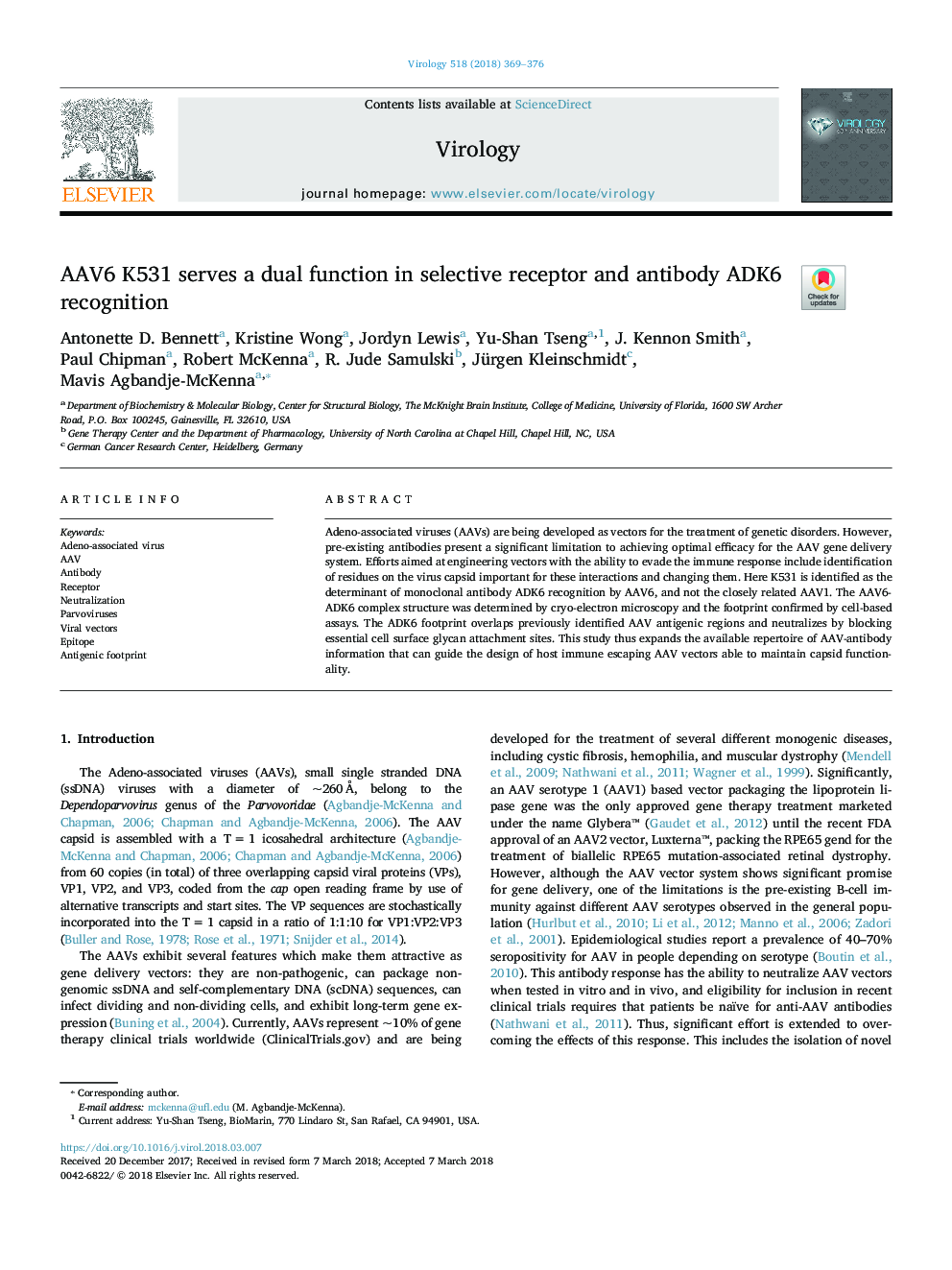| Article ID | Journal | Published Year | Pages | File Type |
|---|---|---|---|---|
| 8751487 | Virology | 2018 | 8 Pages |
Abstract
Adeno-associated viruses (AAVs) are being developed as vectors for the treatment of genetic disorders. However, pre-existing antibodies present a significant limitation to achieving optimal efficacy for the AAV gene delivery system. Efforts aimed at engineering vectors with the ability to evade the immune response include identification of residues on the virus capsid important for these interactions and changing them. Here K531 is identified as the determinant of monoclonal antibody ADK6 recognition by AAV6, and not the closely related AAV1. The AAV6-ADK6 complex structure was determined by cryo-electron microscopy and the footprint confirmed by cell-based assays. The ADK6 footprint overlaps previously identified AAV antigenic regions and neutralizes by blocking essential cell surface glycan attachment sites. This study thus expands the available repertoire of AAV-antibody information that can guide the design of host immune escaping AAV vectors able to maintain capsid functionality.
Related Topics
Life Sciences
Immunology and Microbiology
Virology
Authors
Antonette D. Bennett, Kristine Wong, Jordyn Lewis, Yu-Shan Tseng, J. Kennon Smith, Paul Chipman, Robert McKenna, R. Jude Samulski, Jürgen Kleinschmidt, Mavis Agbandje-McKenna,
